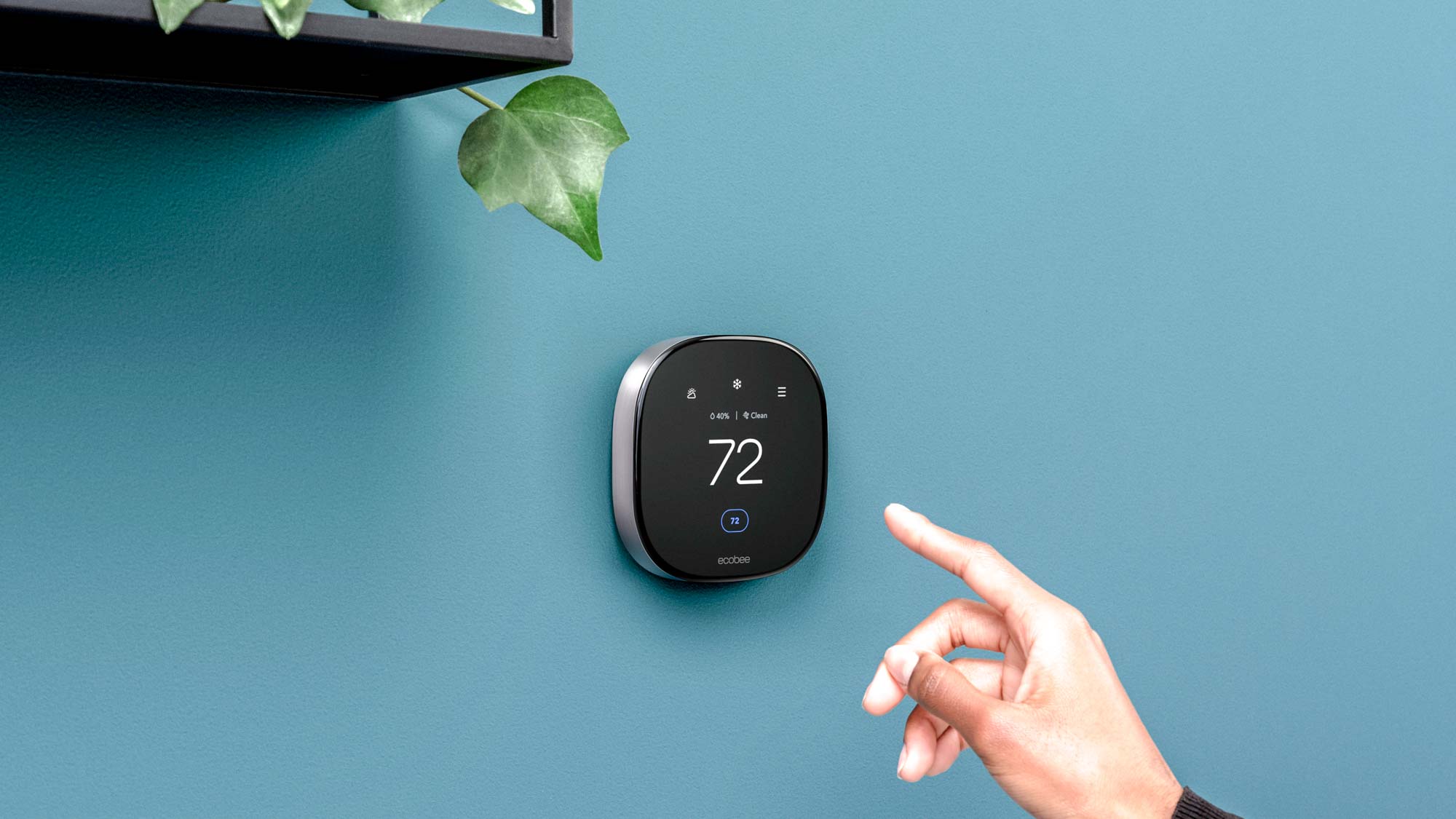Tom's Guide Verdict
The Ecobee Smart Thermostat Premium is now much better looking and more intelligent than before.
Pros
- +
Updated, more attractive design
- +
Built-in air quality monitor
- +
Works with Siri and Alexa
- +
Compatible with most major smart home platforms
Cons
- -
Air quality monitor of limited use
- -
Built-in speaker doesn’t sound great
Why you can trust Tom's Guide
Display: 2.9 x 2.9 inches/540 x 540
Wi-Fi: 2.4/5GHz
Works with: Alexa, Google Assistant, HomeKit, SmartThings, IFTTT
On the inside, the Ecobee Smart Thermostat Premium isn’t a radical imagining of the company’s marquee smart home device. What stands out the most about Ecobee’s latest smart thermostat is its redesigned exterior, which has a much larger display and a nicer finish. It now looks more like a smart thermostat that costs $249.
That’s not to say there isn’t a lot going on inside. The Smart Thermostat Premium now has an air quality sensor built in — new for the product — and carries over its Siri and Alexa integration from the previous generation. And, like before, it works with Ecobee’s Smart Sensors, so you can make sure all your home’s rooms reach the temperature you want.
All of these things make it the smartest of the smart thermostats, but is it the best smart thermostat for you? You’ll have to read the rest of our Ecobee Smart Thermostat Premium review to find out.
Ecobee Smart Thermostat Premium review: Price and availability
The Ecobee Smart Thermostat Premium was released in May 2022. It costs $249, and comes with a remote sensor. It’s the highest-end model in Ecobee’s line. Just below it is the Ecobee Smart Thermostat Enhanced ($189), and then below that is the Ecobee3 Lite, at $149. This chart below breaks down the differences between each model.
Before you buy a smart thermostat, check with your local utility provider, as you may be able to get a rebate on your purchase. Ecobee has a handy tool on its site that lets you find rebates based on your location.
| Row 0 - Cell 0 | Ecobee Smart Thermostat Premium | Ecobee Smart Thermostat Enhanced | Ecobee3 Lite |
| Price | $249 | $189 | $149 |
| Includes remote Smart Sensor | Yes | No | No |
| Wi-Fi | Dual-band | Dual-band | Single band |
| Siri, Alexa built in | Yes | No | No |
| Display | 2.9 x 2.9 inches | 2.9 x 2.9 inches | 2.9 x 1.9 inches |
| Resolution | 540 x 540 | 540 x 540 | 360 x 480 |
| Air quality monitor | Yes | No | No |
| Smoke alarm detection | Yes | No | No |
| Built in speaker | Yes | No | No |
| Presence detection | Yes | Yes | No |
If you want to purchase additional Smart Sensors, you can buy them in a two-pack for $99. Annoyingly, you can’t purchase these sensors individually. So you won’t save any money if you buy either of Ecobee’s less expensive thermostats, and then the Smart Sensors separately.
Ecobee Smart Thermostat Premium review: Design
The biggest, and most noticeable change between the Ecobee Smart Thermostat Premium and the older Ecobee thermostats is the look of the device. While it retains the familiar shape — a square with rounded corners — the newest model has a zinc, rather than plastic body and a much larger touchscreen display on the front. Only the Premium thermostat has this finish; the Enhanced model uses plastic.
Get instant access to breaking news, the hottest reviews, great deals and helpful tips.

The result is a device that looks a lot more, well, premium, and befitting its equally premium price. I still think the Nest Learning Thermostat and its simple, circular shape is the more iconic of the smart thermostats, but the new Ecobee looks much more worthy of its price.
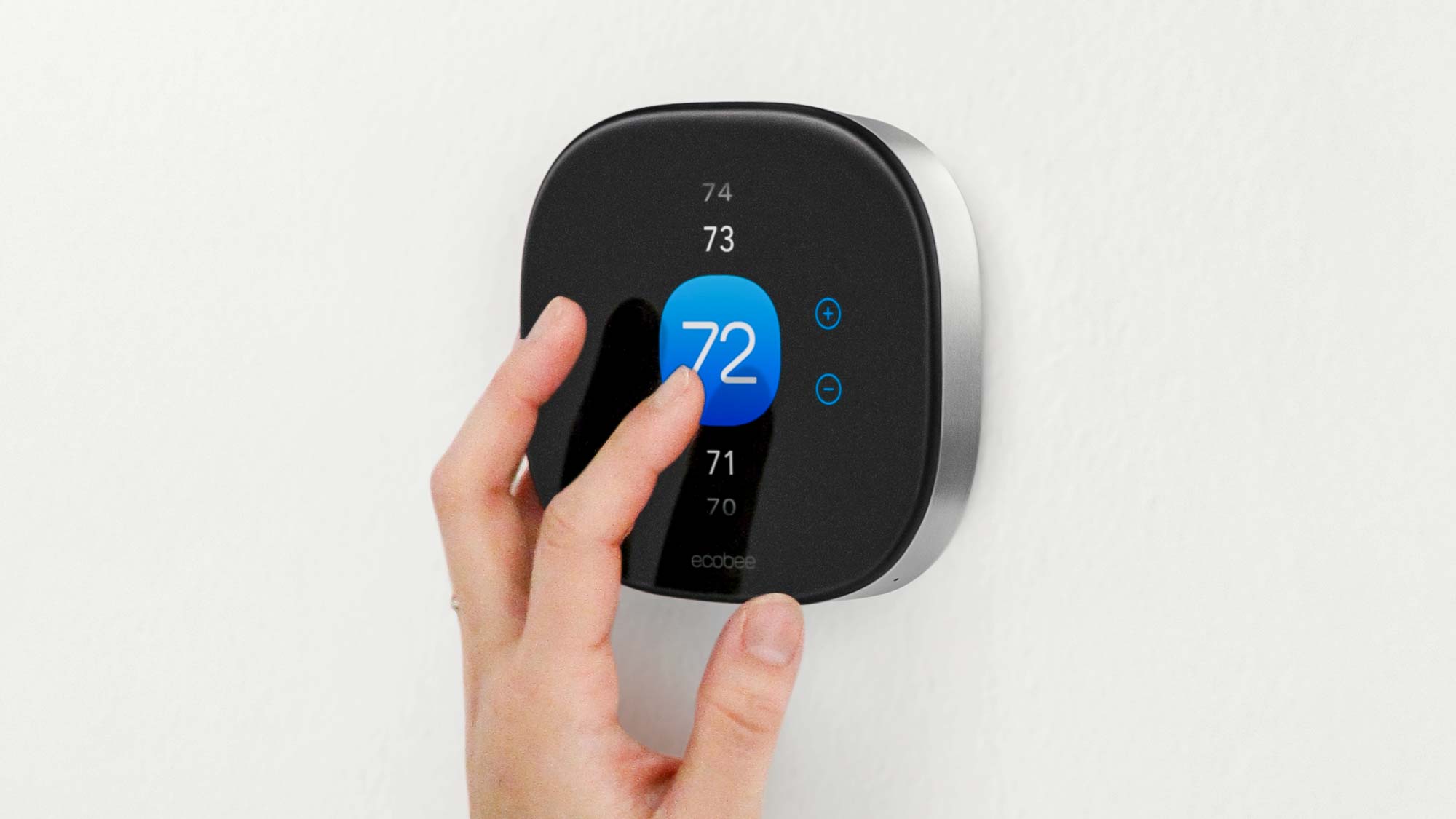
I especially like the larger and squarer display, which not only makes it easier to see from afar, but makes it look less like someone simply shoved a smartphone display into a thermostat.
Ecobee Smart Thermostat Premium review: Performance and installation
I used the Ecobee Smart Thermostat Premium for a couple of weeks, and found that it worked flawlessly the entire time. Its display was responsive, and menus were easy to navigate. And, when temperatures dipped low, it reliably turned on my heating.
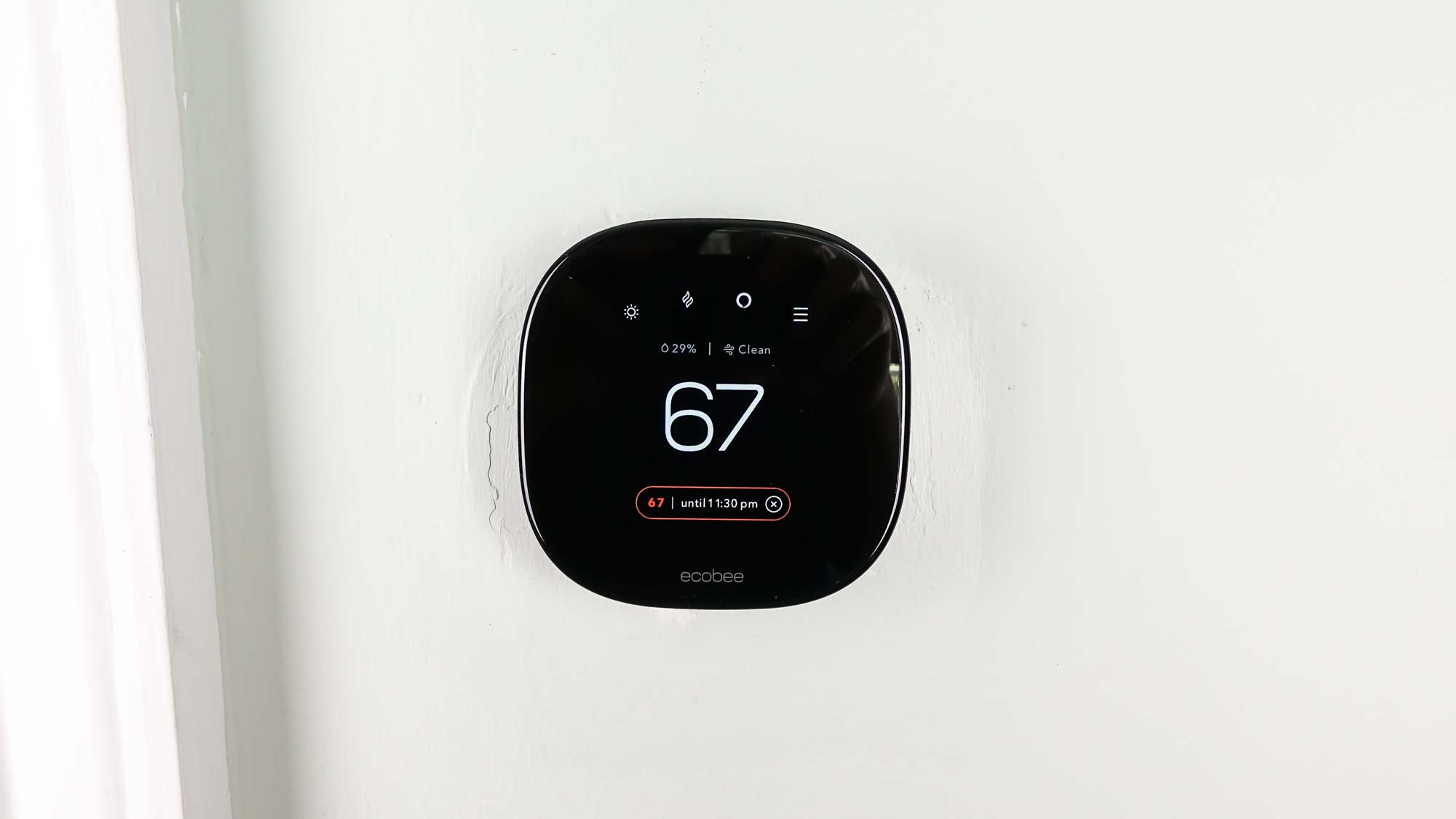
Apart from its design and display, the other big feature added to the Ecobee is an air-quality monitor. Just above the temperature is a small icon that gives you an overall look at your air quality; tap on it, and you get a more detailed look at both VOCs and CO2 levels. You don’t get specific particulate counts, just a scale from Clean to High, along with suggested actions, such as opening a window.
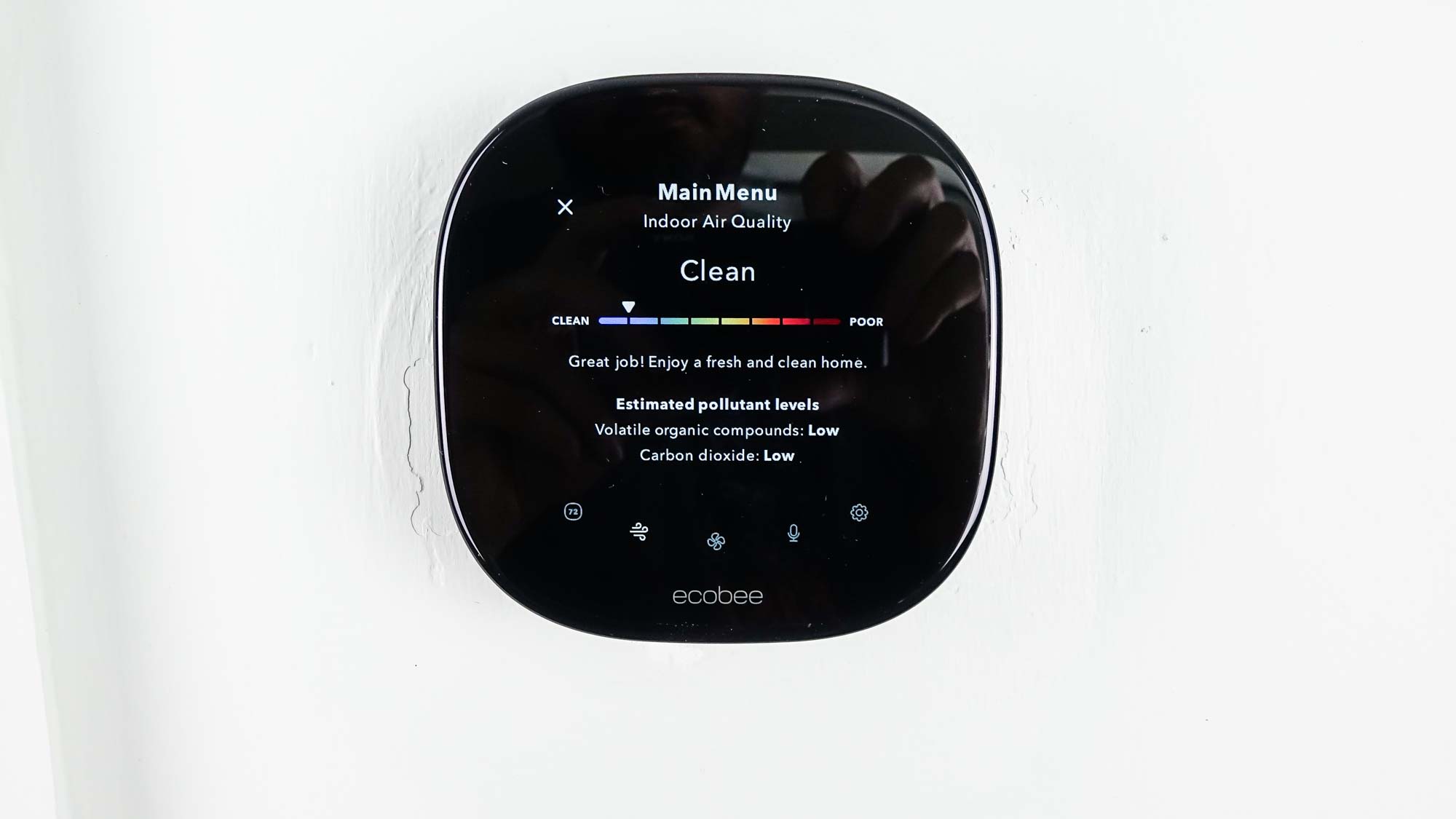
I was unable to test this, but once the thermostat becomes widely available, it will be able to automatically turn on a home’s ventilation system for 20 minutes if your air quality drops. But I wish that Ecobee would allow the air quality settings to be integrated with Alexa or HomeKit, so that you could have some other smart home accessory, like a fan, turn on if the air quality dropped.
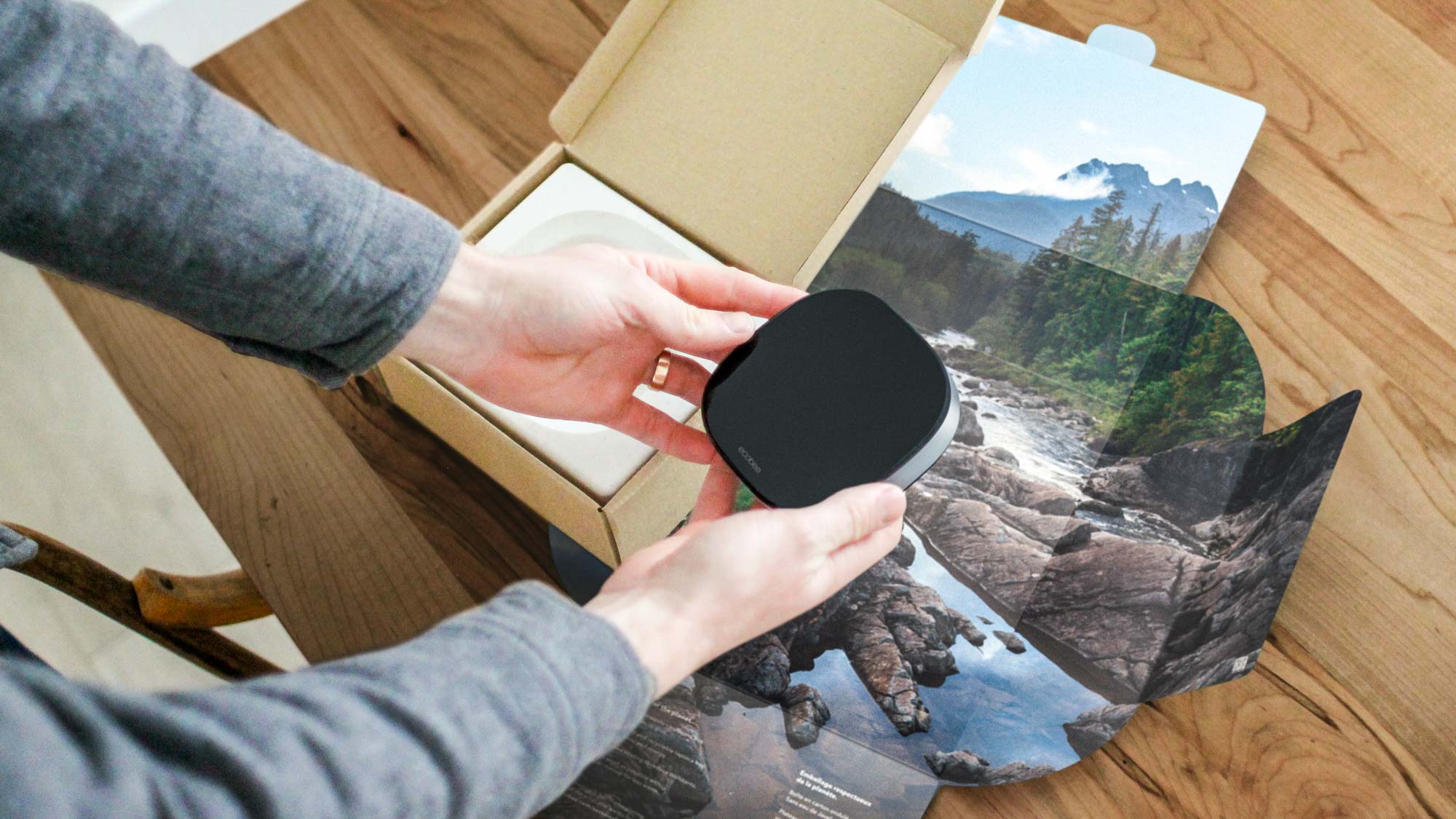
Installing the Ecobee was as simple as most other smart thermostats. You first attach a base plate to your wall using two screws (the base has a little bubble level so you know everything’s even); next, attach the wires from your heating or cooling system to the base; and finally, connect the face of the Ecobee to the base plate.
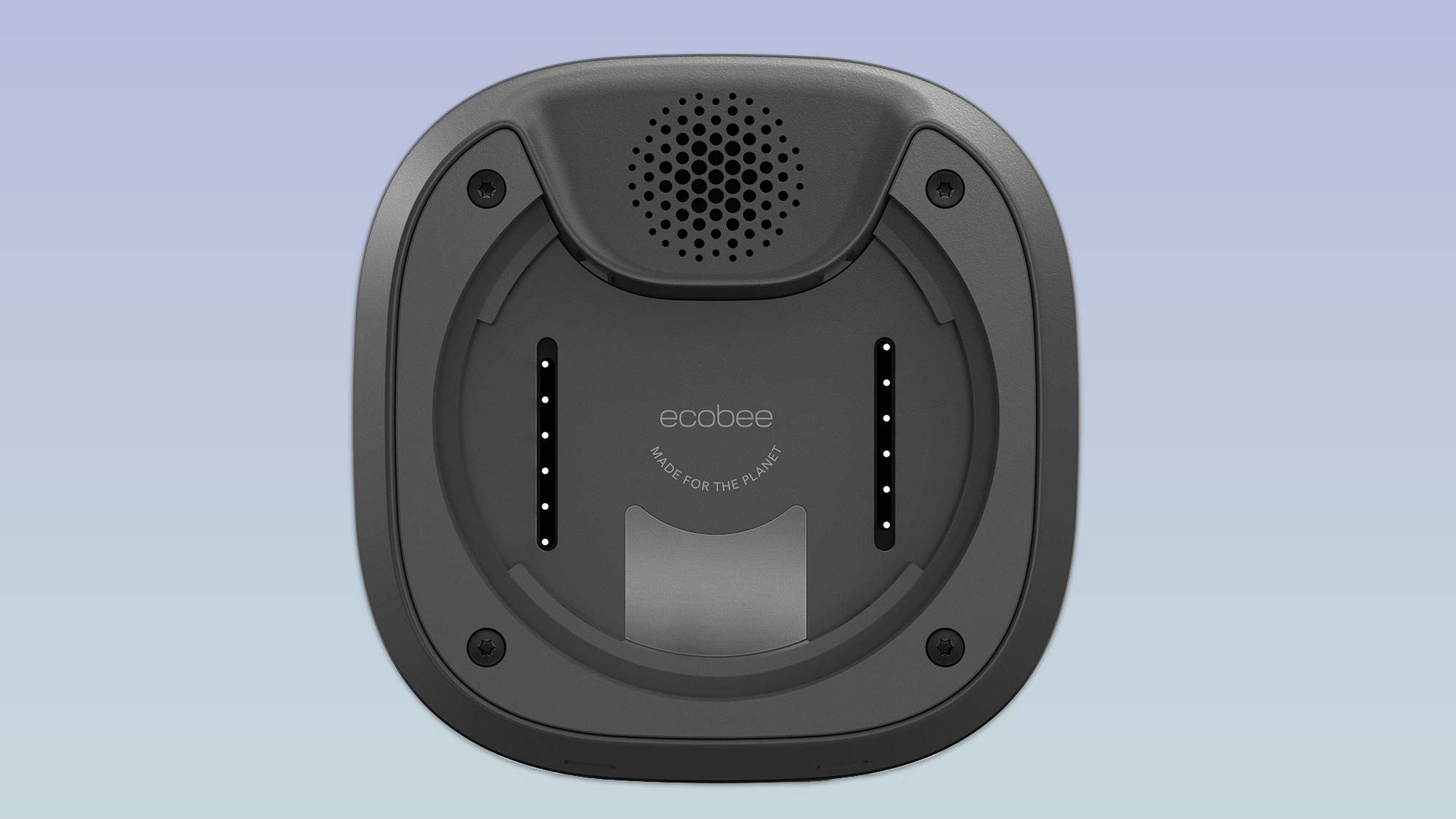
Your system will need a C-Wire to deliver constant power to the Ecobee; the company bundles a C-Wire adapter with the thermostat in case you don’t have one.
Then, it’s a matter of going through the Ecobee app to connect the thermostat with your Wi-Fi and, if you want, Alexa or Google Assistant.
Ecobee Smart Thermostat Premium review: Smart Assistants and smart home compatibility
Like the Ecobee SmartThermostat, the newer Premium model has a microphone and speaker built in. If you’re so inclined, you can use it as an Alexa-enabled smart speaker, so you don’t need a separate Echo device to ask for the weather, news, and so forth. The speaker in the Smart Thermostat is pretty weak — as tinny as a first-generation Echo Dot — so it would be the last choice for me if I wanted to play music.

Also like the SmartThermostat, you can also link the Premium with Siri, and use it as a HomeKit device. However, unlike with Alexa, Siri isn’t built directly into the thermostat; you’ll need to link it with a HomePod Mini if you want to use this feature.

Having a voice assistant in a smart thermostat is a nice, but not a necessary feature; it’s convenient if you have a lot of other smart home devices and want to control them by voice.
During my testing with Alexa, I found the voice assistant got a little confused with some of my other smart speakers; I have an Amazon Echo Show 15 in my kitchen — a room away from the thermostat — and when I would make requests to play music, it would do so through the Ecobee rather than the Echo Show 15.
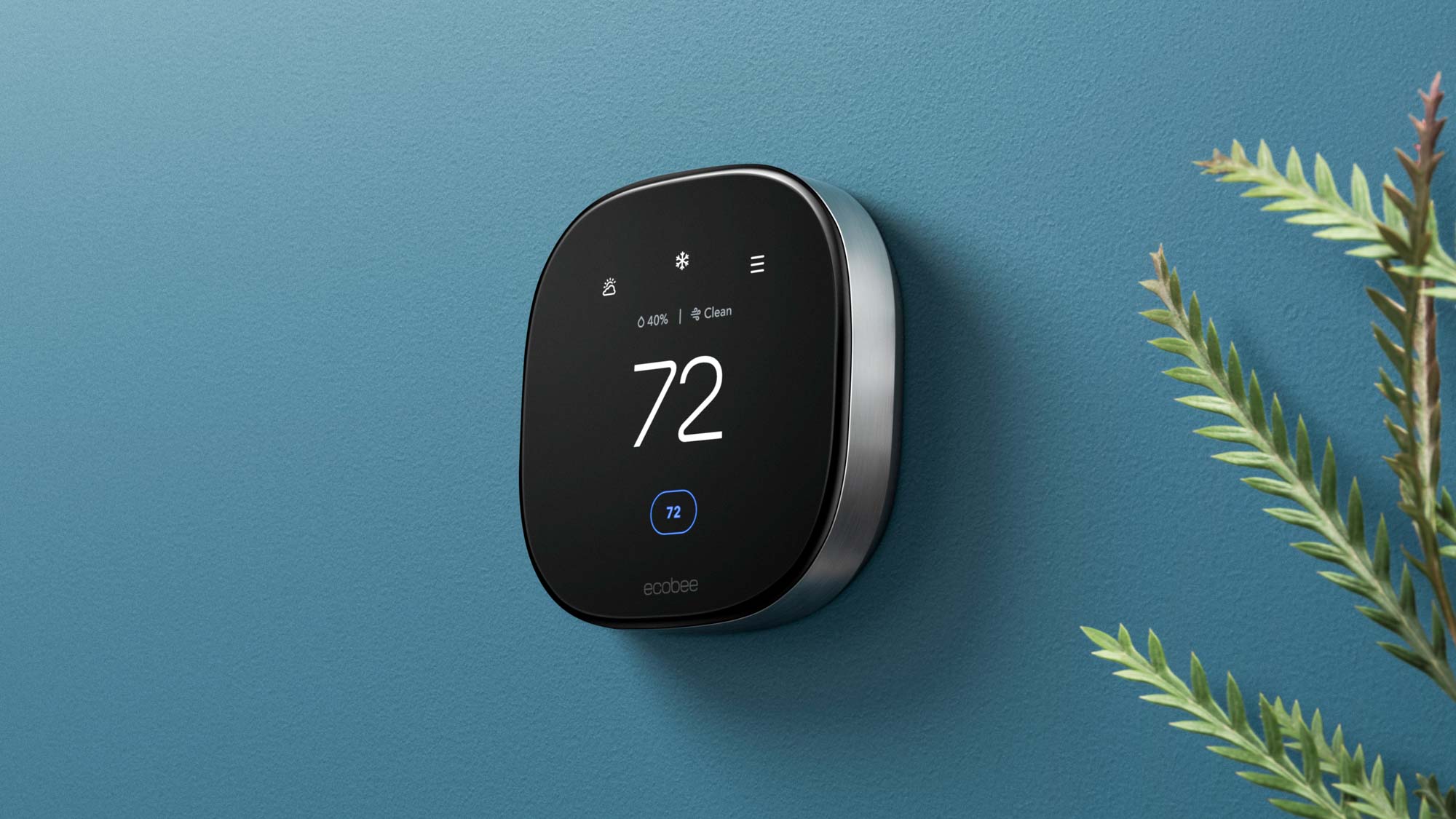
In addition to Alexa and HomeKit, the Ecobee will also work with SmartThings, IFTTT, and Google Home, making it one of the more connected smart thermostats on the market.
Ecobee Smart Thermostat Premium review: Verdict
I’ve long felt the best reason to get any of Ecobee’s smart thermostat has been its Smart Sensors, which detect both temperature and occupancy. Place one of these sensors in a room that never gets as hot or as cold as you want, and you can tell the thermostat to keep the heat or the A/C on until that room gets to the temperature you want. Crucially, though, you can program it to do this only if the sensor detects a person in that room, which can save you potentially hundreds of dollars over the course of a year.
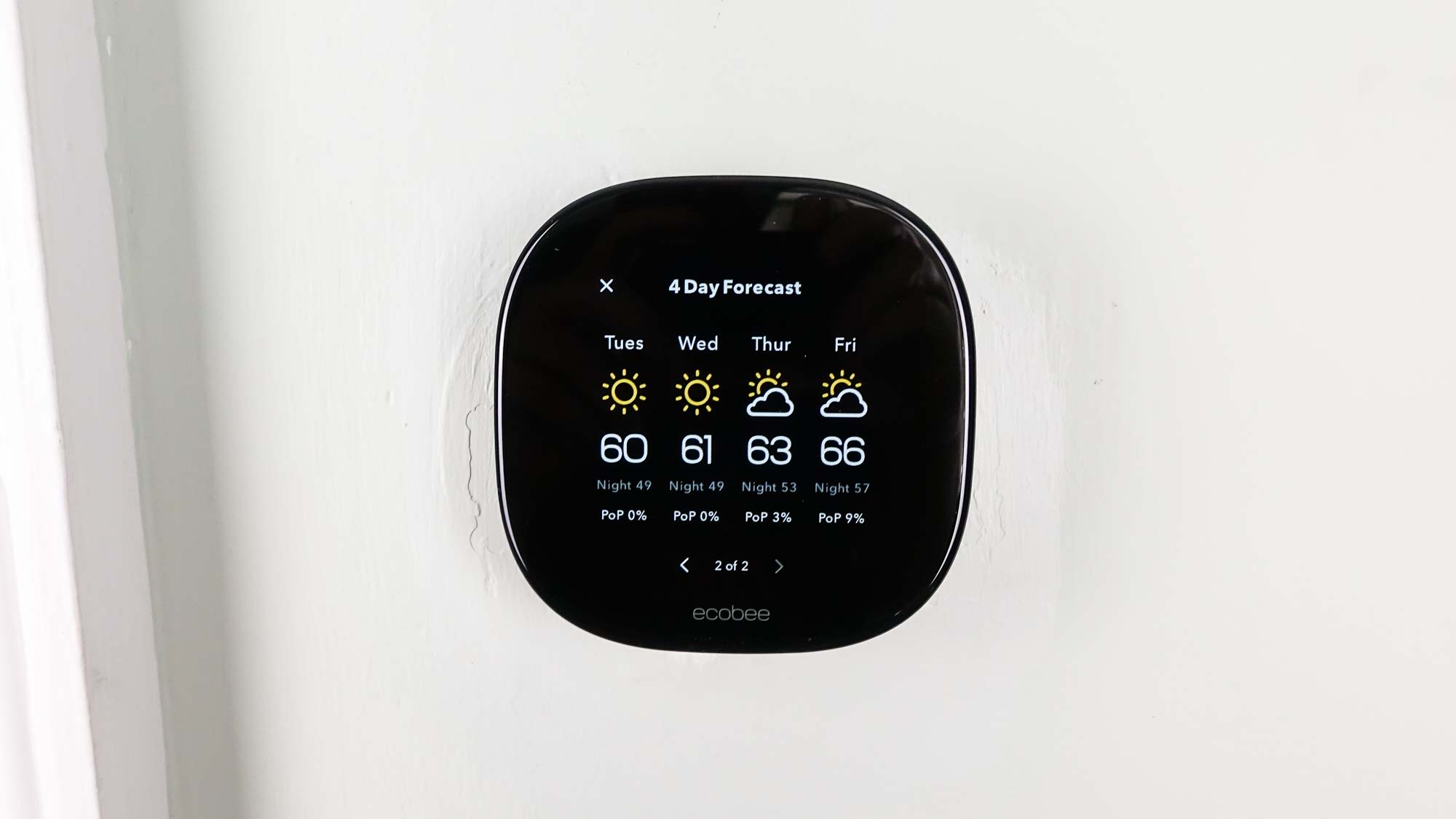
Of course, those sensors aren’t anything new; what has changed is the look and feel of the Ecobee Smart Thermostat Premium. Its zinc finish and larger screen make it, aesthetically, nearly as attractive as the Nest Learning Thermostat.
I also like the addition of an air-quality sensor to the Ecobee, but if you could tie it to smart home automations, it would be a lot more useful. It’s also nice that the Ecobee has both Siri and Alexa, but it’s even better that it works with all the major smart home platforms — something you won’t get with Nest.
Next: 4 ways a smart thermostat can lower your energy bill.

Michael A. Prospero is the U.S. Editor-in-Chief for Tom’s Guide. He oversees all evergreen content and oversees the Homes, Smart Home, and Fitness/Wearables categories for the site. In his spare time, he also tests out the latest drones, electric scooters, and smart home gadgets, such as video doorbells. Before his tenure at Tom's Guide, he was the Reviews Editor for Laptop Magazine, a reporter at Fast Company, the Times of Trenton, and, many eons back, an intern at George magazine. He received his undergraduate degree from Boston College, where he worked on the campus newspaper The Heights, and then attended the Columbia University school of Journalism. When he’s not testing out the latest running watch, electric scooter, or skiing or training for a marathon, he’s probably using the latest sous vide machine, smoker, or pizza oven, to the delight — or chagrin — of his family.
